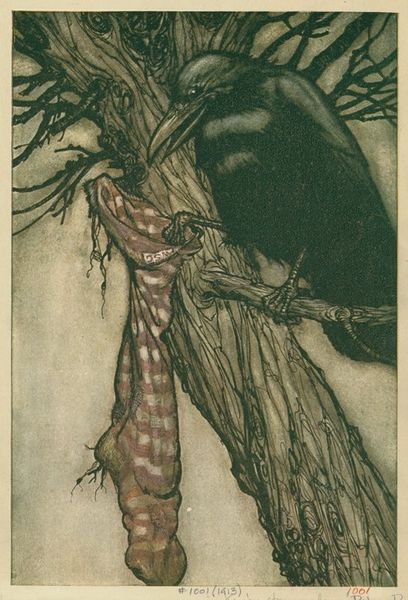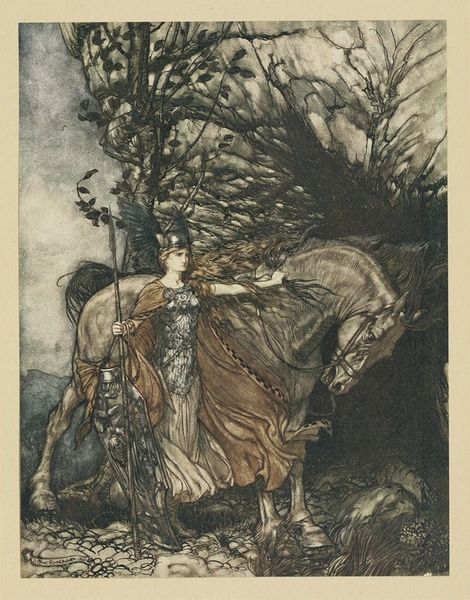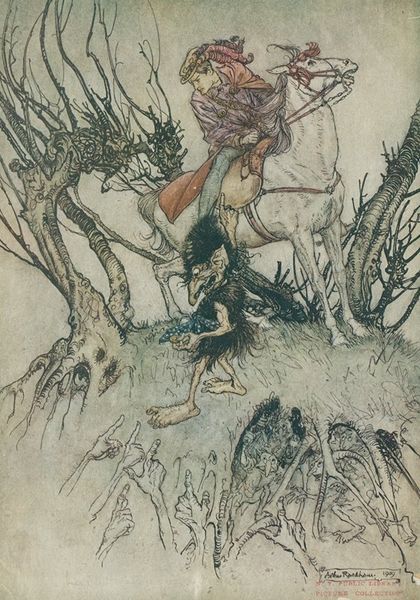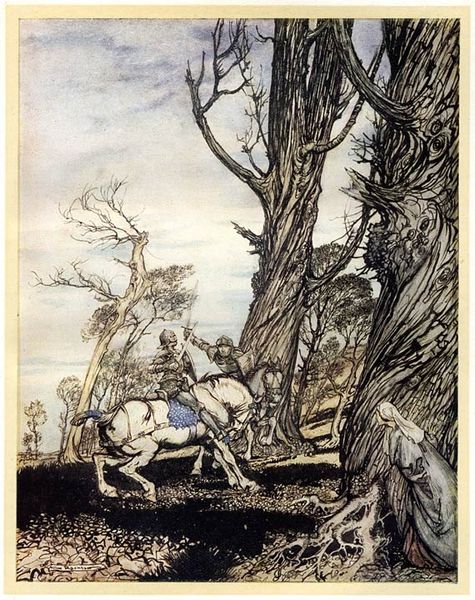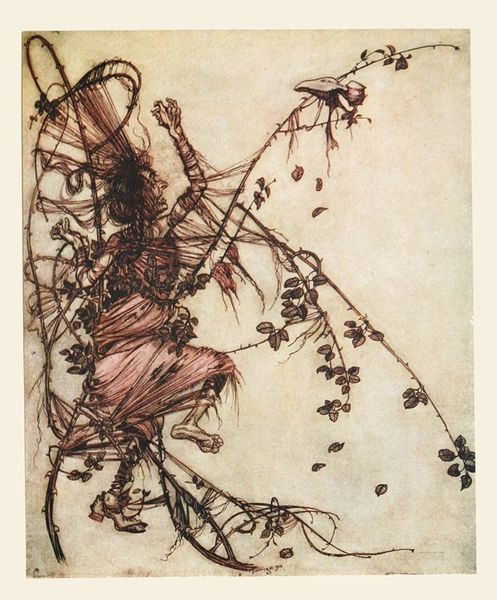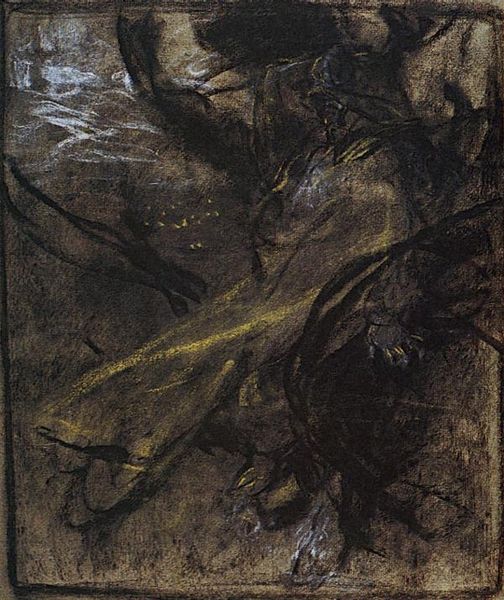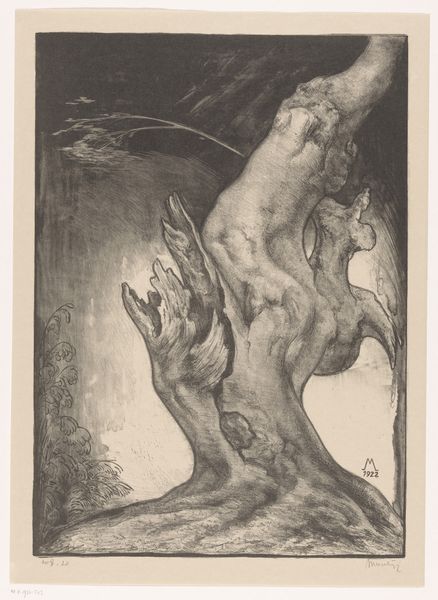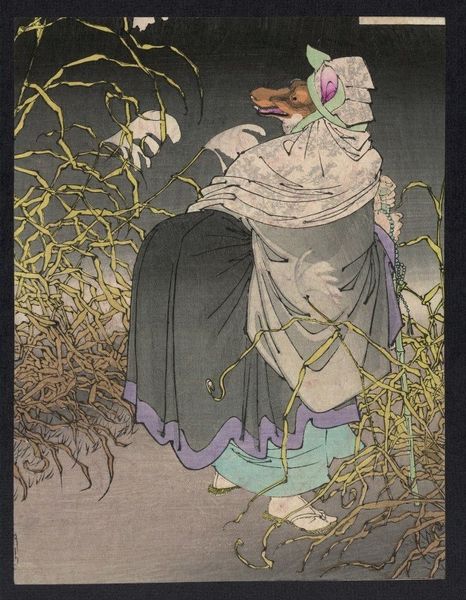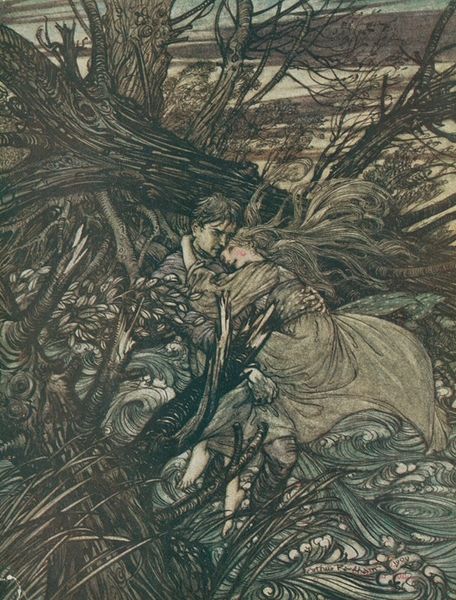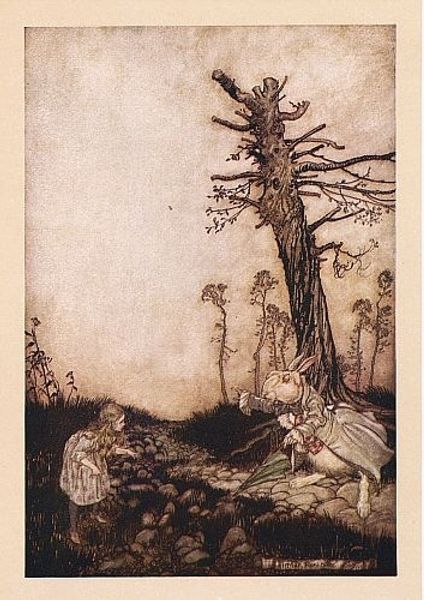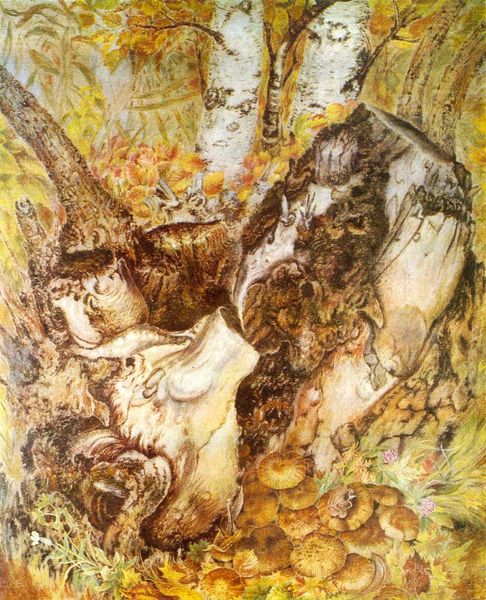
#
landscape illustration sketch
#
fantasy art
#
fantasy illustration
#
fluid art
#
sketchbook drawing
#
watercolour bleed
#
watercolour illustration
#
sketchbook art
#
fantasy sketch
#
watercolor
Copyright: Public Domain: Artvee
Curator: This watercolor illustration is titled "Tree of mine! O Tree of mine! Have you seen my naughty little maid" by Arthur Rackham, created in 1927. Editor: Oh, immediately I get this feeling of stepping into a secret glade. There’s a real hushed quality to it, like I shouldn’t be eavesdropping on a conversation. Curator: Indeed. Rackham masterfully employs line and wash to generate a subtly ominous atmosphere, focusing on contrasting the stark figures of the witch and the tree against the pale background. The limited palette intensifies the narrative focus. Editor: It’s curious, though, isn’t it? The title hints at playful mischief, but the visual tone leans more towards the unsettling. The witch is…well, she's peak witch, but the tree seems almost burdened, and those flowering branches are so delicate and otherworldly above the crone's wickedness. Curator: The dichotomy is pivotal. Rackham often explored the interplay between innocence and malevolence. Observe how the linear quality of the branches above creates a visual barrier that seems to cage the figures beneath. It’s a deliberate structural element which could connote confinement. Editor: I can see that, it’s almost like the tree spirit trapped within. And maybe the ‘naughty maid’ isn't so naughty, just a soul caught between two worlds or something. It gives me the shivers imagining being that maid, wherever she is. Curator: The piece undeniably operates on multiple interpretative registers. Its impact lies less in overt symbolism and more in the suggestive power of form and the implied relationship between the figures and the landscape. Editor: Exactly, I get a whole tangled fairy tale out of a relatively simple composition. There's a timeless, almost archetypal quality about it too. Curator: An astute point. This is the strength of Rackham’s compositional strategy: by employing relatively standard tropes, he amplifies emotional resonance. Editor: So even now, staring at this nearly century old illustration, that power and artistry holds me captivated and unsettled, that is no small feat. Curator: A resonant conclusion, indeed, highlighting the enduring value of form in facilitating emotional response.
Comments
No comments
Be the first to comment and join the conversation on the ultimate creative platform.
